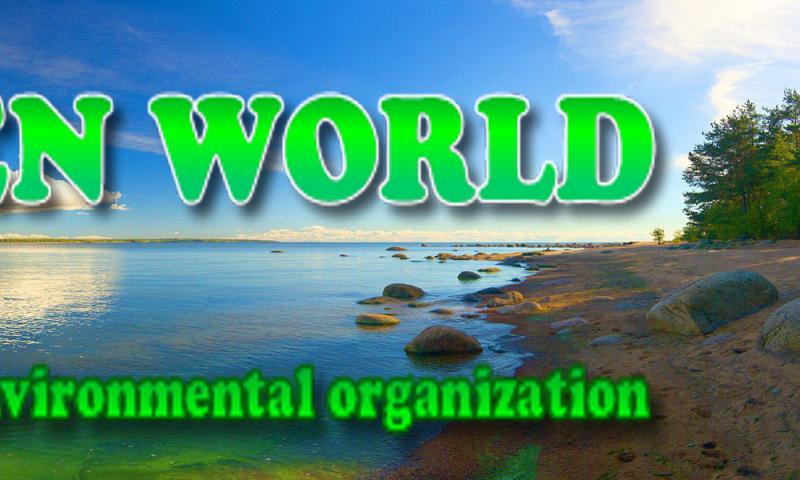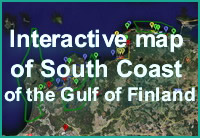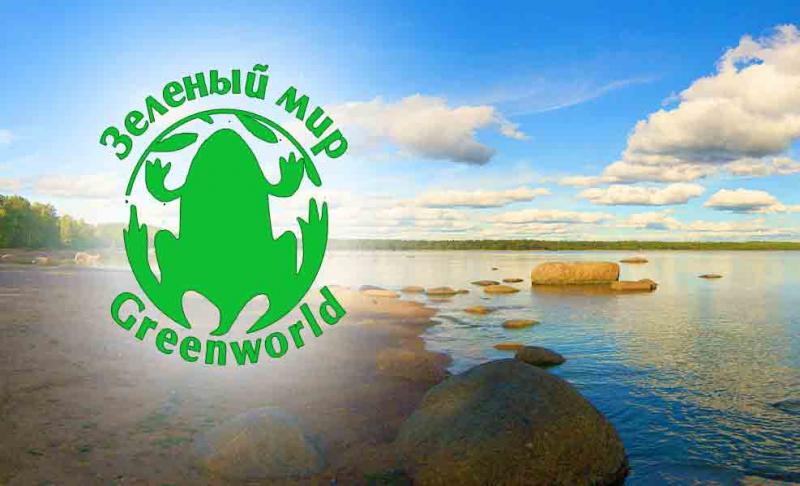
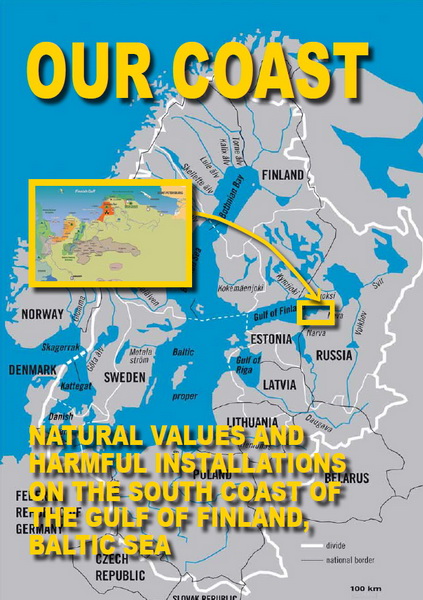 |
The South Coast of the Gulf of Finland |
|---|---|
| Natural Values and Harmful Installations |
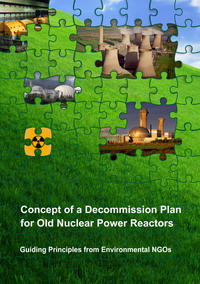 |
Concept of a decommission plan for old nuclear power reactors |
|---|---|
| Guiding Principles from Environmental NGOs |
Serbian Nuclear Waste: Where are They From
Proceedings of the 15th International Symposium on the
Packaging and Transportation of Radioactive Materials
PATRAM 2007
October 21-26, 2007, Miami, Florida, USA
REPATRIATION OF VINČA RA REACTOR SPENT FUEL
E. Bradley
International Atomic Energy Agency
Vienna, Austria M. Pešić
Vinča Institute
Belgrade, Republic of Serbia
J. Kelly
International Atomic Energy Agency
Vienna, Austria P. Adelfang
International Atomic Energy Agency Vienna, Austria
I. Goldman
International Atomic Energy Agency
Vienna, Austria D. Jinchuk
International Atomic Energy Agency
Vienna, Austria
ABSTRACT
Serbian Nuclear Waste: Where are They FromThe RA Research Reactor is located at the Vinča Institute of Nuclear Sciences near Belgrade, Serbia. The reactor is a 6.5MWt, tank-type, heavy water moderated and cooled research reactor of Russian design which commenced operation in 1959. After being temporarily shutdown in 1984 for refurbishment, a final shutdown decision was made in 2002. At present, operations are underway to safely remove and repatriate the spent fuel to the Russian Federation (RF), as well as to improve radioactive waste management and plan for decommissioning. As a major activity within the Vinča Institute Nuclear Decommissioning (VIND) Program, the repatriation of over 8,000 fuel elements containing 2.5 tons of uranium metal will significantly reduce nuclear proliferation and environmental safety risks confronting the current facility. Poor water quality in the spent fuel storage basins and degraded fuel integrity significantly challenge efforts to repackage and transport the spent fuel. This paper will focus in the activities related to spent fuel repackaging and shipment, report on progress, detail significant challenges, and provide an overview of the fully integrated project.
INTRODUCTION
In 2004, the Serbian government established the Vinča Institute Nuclear Decommissioning (VIND) Program to achieve three principal objectives:
- repackage and ship spent fuel to the country of origin with the aim to remove environmental and proliferation risks at the Vinča Institute,
- improve radioactive waste storage at the Vinča Institute to reduce related environmental risks, and
- begin decommissioning of the RA research reactor and the radioactive waste storage hanger 1 to ultimately remove the entire risk.
The program for all VIND activities and projects is scheduled for completion in 2015.
The International Atomic Energy Agency (IAEA) supports the work to achieve these objectives through three closely related Technical Cooperation (TC) projects described briefly below. The integration of these three projects and overall support of the VIND Program represents the largest TC undertaking in IAEA history.
Safe management of radioactive waste in the Vinča Institute
The Vinča Institute has in the past, and continues to receive, process and store all radioactive waste for Serbia and historically received and stored all radioactive waste from the former Yugoslavia. These radioactive wastes include low-level, intermediate-level, high activity and transuranic wastes; more than 4,000 sealed and unsealed sources; depleted uranium, natural uranium; and other safeguarded materials. The facility organization is challenged by poor historical records and insufficient waste management infrastructure. What limited equipment and facilities the RA reactor and support facilities do have suffer from inadequate maintenance. The entire site is also undergoing significant security upgrades.
IAEA TC project SRB3003, ‘Safe Management of Waste in the Vinča Institute’ aims to improve the management of radioactive waste (RAW) on the site and upgrade the organization’s capabilities for radioactive waste conditioning and storage. Areas of support include the design, construction and equipping of a new waste processing and storage facilities, waste retrieval from two existing RAW storage facilities, support to spent fuel repatriation, and the management of RAW generated during decommissioning activities.
Decommissioning of the Vinča RA research reactor
IAEA TC project SRB3002 provides support for decommissioning the Vinča RA research reactor. The objective of the project is to develop a decommissioning plan which will support implementation of safe, timely and cost effective decommissioning of the RA reactor up to unrestricted use of the reactor building for other purposes. IAEA support includes facility characterization and preparation of detailed decommissioning plans. Removal of contaminated structures will commence following the removal of spent nuclear fuel from the RA reactor building. [1]
Funding does not currently exist for decommissioning and dismantlement of these facilities, and donor participation is being actively pursued. At the present time, Vinča senior management and the IAEA are exploring options for “incremental decommissioning” of the RA reactor, reactor support structures, and other facilities at Vinča. The incremental decommissioning concept essentially means dividing the project into “bite-sized pieces” of $0.5M to $4M, each of which can be funded by individual donor nations and organizations (donor-partners) consistent with their national and organizational objectives. This approach will allow donor-partners to participate in these small, important decommissioning projects both financially and through direct labor and material support.
Safe removal of spent fuel of the Vinča RA research reactor
IAEA TC project SRB4002 provides support for the stabilization, preparation and transport of spent fuel from the Vinča RA research reactor to the Russian Federation (RF). The spent fuel is comprised of 8,030 TVR-S fuel elements (Figure 1) [2]. Approximately 17% of these contain highly enriched uranium. The scope also includes considerable prerequisite infrastructure upgrades to prepare the facility for the spent fuel repackaging and shipment. This includes modifications to the spent fuel basins, related handling equipment, ventilation systems, radiation monitoring systems; development of related documentation, regulatory approvals, international agreements and licenses; the procurement of required equipment and services, and overall project management and implementation.
The remainder of this paper focuses on the spent fuel removal project and related activities.
SIGNIFICANT CHALLENGES
The safe return of the Vinča RA reactor spent fuel to the RF must overcome several significant challenges. Due to long term, poor water chemistry in the storage basins, the fuel cladding has undergone significant corrosion. The site infrastructure is not adequate to support the required operations due to the technical requirements of the required activities, sustained lack of a proper maintenance program and limited, available resources to replace antiquated equipment. External to the Vinča Institute, the project faces challenges such as the limited available nuclear regulatory infrastructure within Serbia. Finally, the project’s scope in the context of available financial resources within Serbia results in an ongoing challenge to secure funding from international donors.
Figure 1. TVR-S fuel ‘element’
Condition of the spent fuel elements
While only one fuel element failed in service over the facility’s history, the integrity of many of the fuel elements currently stored in the Vinča Institute spent fuel storage basins is severely degraded; current estimates suggest up to 30% failure The spent fuel basins are filled with tap water, have no water circulation or chemistry control systems, and have no limits or controls placed on any relevant water chemical parameters. Initial indications of increasing water activity levels were observed in 1984 and fully documented in 1996-1997. At that time a thick layer of sludge was found to cover the basin floor and walls. This sludge was sampled and analyzed in 1996. [3]
Subsequent analysis of the spent fuel storage basins confirmed significant fuel degradation and determined that the water chemistry was unacceptable for spent fuel storage (Table 1) and had contributed to accelerated corrosion of the fuel elements. [3]
| Water parameters | pH | Conductivity,S/cm | Cl, mg/L |
SO4, mg/L |
|---|---|---|---|---|
| Value | 7.53 ± 0.12 | 492 ± 84 | 73 ± 6 | 47 ± 13 |
Table 1 RA reactor spent fuel basin water chemistry average parameters
The loss of fuel element integrity has resulted in characteristic elevated cesium activity levels in the fuel storage basins (Figure 2) as well as fuel handling challenges due to the particular corrosion mechanisms. For example, Figure 3 shows the mechanism by which uranium metal corrodes, interacting with the surrounding aluminum to essentially fuse the fuel element to the surrounding material following an initial loss of integrity due to corrosion of the aluminum cladding.
Figure 2. Vinča spent fuel basin water activity
Degraded or inadequate support infrastructure
Due in part to the challenges associated with the spent fuel itself, as well as degraded facility infrastructure, significant modifications and enhancements are required to support the spent fuel shipments. Reviews and assessments have identified upgrade requirements to the spent fuel basins, radioactive waste storage, radiation monitoring and protection, explosive and radioactive (85Kr) gas monitoring, materials handling equipment, ventilation equipment, as well as utilities and services. [4]
Within the spent fuel storage basins, prerequisite activities include the removal of carbon steel components due to their contribution to significant corrosion and sludge buildup and to maximize the available space for repackaging operations. The removal of these carbon steel components was challenging due to their activity as well as their degraded condition. Figure 4 shows two corroded carbon steel pipes in the spent fuel storage basin, removed in 2007.
A water level control system (WLCS) and a separate water chemistry control system (WCCS) have also been proposed to support repackaging operations. The WCCS will focus on controlling the total Cs activity in the storage pond, thereby minimizing total radiation dose to workers and the potential radiological consequences of an inadvertent release of radioactivity during repackaging and transport preparations. [4]
Figure 3. TVR-S corrosion in aluminum fuel channel or storage tube
Figure 4. Corroded carbon steel components in Vinča spent fuel storage basin
In addition to the required upgrades, careful consideration is required with respect to the allocation of space during repackaging operations to accommodate 16 SKODA VPVR/M casks as well as 16 TUK-19 casks. The decision and subsequent layout plans may result in required modifications to accommodate the resultant floor loading and cask handling issues. [4]
Serbian regulatory infrastructure.
The regulatory submissions required to support the above scope of work and associated review and approval burden are considerable. To accommodate the project schedule, the Serbian Regulatory Authority (SRA) must receive supplemental, dedicated resources. This is particularly relevant as the three main projects within the VIND Program are highly interdependent. Many steps of the fuel repackaging and return project are predicated by specific waste management project progress – all of which involve submittals for regulatory approvals. This issue is further complicated by limited resource availability within the SRA and recent Governmental changes in the Republic of Serbia.
Funding
The involved risks and complexity of work compounded by the other challenges briefly described above require the allocation of significant resources. The VIND Program continues to pursue funding options from international donors, including governmental organizations and NGOs (non-government organizations). Numerous donors continue to provide assistance through direct funding as well as in-kind contributions in the form of new or upgraded equipment, technology transfer, and cost-free human resources.
PROGRESS
In 2006 and 2007, significant progress has been made within the spent fuel removal project and several high profile milestones were achieved.
In September 2006, a USD 4.3 million contract was signed between the IAEA, a Russian consortium, and the Vinča Institute for the repackaging and preparation of the RA reactor spent fuel to be returned to the RF. This contract subsequently led to the completion of the following related high profile milestones.
- In March 2007, work to remove carbon steel components from the spent fuel storage basins was completed. These components were the source of significant corrosion processes and sludge buildup in the basins and also had to be removed to provide working space for repackaging operations. A plume of sludge can be seen around the component being removed from the spent fuel storage basin in Figure 5.
Figure 5. Vinča spent fuel basin, carbon steel removal operations
- In May 2007, R&D Co. Sosny completed a report “Design of SNF Removal to FSUE PA «MAYAK»” detailing the conceptual approach to RA spent fuel repackaging. The finalized document included the disposition of several hundred comments from the project stakeholders [3];
- Building on Sosny’s conceptual approach from above and other related input, the Vinča Institute staff submitted the PSAR to the Serbian Regulatory Authority in June 2007;
- In September 2007, a document defining all technical requirements for a Water Chemical Control System (WCCS) was finalized and adopted by the Project.[4]
- In September 2007, a document defining Sosny’s proposed infrastructure modifications required to support repackaging at the Vinča Institute was submitted.[5]
RELEVANT CONTRIBUTING IAEA ACTIVITIES
Procurement of SKODA VPVR/M Casks
In 2006 the IAEA, with support from the US-DOE, procured ten dual-purpose spent fuel storage and shipping casks (VPVR/M) from ŠKODA JS. These casks were provided, in the form of a donation, to Nuclear Research Institute Řež plc. (NRI Řež) in the Czech Republic with the agreement that NRI Řež make the casks available to support ongoing spent fuel return programs. These ten VPVR/M casks, along with another six procured directly by NRI Řež, are planned for the shipment of Vinča RA reactor spent fuel (Figure 6).
Figure 6. SKODA VMVR/M transport package
The VPVR/M cask design is licensed in the Czech Republic, RF and Ukraine per the procurement contract with ŠKODA JS. However, new fuel baskets will be required to accommodate the Vinča RA reactor spent fuel. These baskets will require further regulatory review and certification, in addition to existing cask design certification, within RF, Serbia and any other transport countries.
Additional detail on the effort to procure the VPVR/M casks may be found in reference [6].
Development of Russian Origin Spent Fuel Return Guideline
In 1999, the USA, RF, and the International Atomic Energy Agency (IAEA) created the Russian Research Reactor Fuel Return (RRRFR) Program with the objective of assisting countries of the Former Soviet Union (FSU) to repatriate fresh and irradiated nuclear fuel containing high enriched uranium (HEU) to the RF. The Program has experienced many successes, including the first shipments of spent fuel in early 2006 from the Institute of Nuclear Physics in Tashkent, Uzbekistan. The planning and execution of this first shipment of spent fuel proved to be very challenging, and much was learned from that project.
In the beginning of 2006, the IAEA, in cooperation with the European Union, RF, USA, and a number of individual Member States, commenced an initiative to capture such lessons for optimization of future shipments. This “lessons learned” exercise in turn spurred the collection and organization of relevant program-related information consisting of basic information on legal, regulatory, and administrative requirements for shipments. This work resulted in the creation of a guideline on the “Technical and Administrative Preparations for Shipment of Russian-Origin Research Reactor Spent Fuel to the Russian Federation”. The collection and dissemination of this information by the IAEA to appropriate Member States, including the Republic of Serbia, is greatly facilitating their participation in the RRRFR Program and is expected to assist other Member States in completing fuel shipments over the next several years. [7]
CONCLUSIONS
The VIND Program is working to address the significant environmental and proliferation concerns of the Vinča Institute within the Republic of Serbia. Continually degrading spent fuel physical conditions, as well as recent regional conflicts, underscore the importance of prompt tangible action to progress Program priorities. IAEA support of the spent fuel repatriation project, combined with related IAEA activities in support of the RRRFR program and the support of other key stakeholders, has resulted in the recent achievement of several major VIND SNF project milestones. However, overall project completion is dependent on adequate funding and international support/cooperation, and the IAEA continues to work toward those objectives.
REFERENCES
- Nikolić, D., Ljubenov, V. and Pešić, M., “Completion of the Draft Decommissioning Plan for the RA Research Reactor, a Progress Report” IAEA TC Project SRB/3/002 Decommissioning of the Vinča RA Research Reactor Service Contract SRB3002-85400N, Vinča Institute, Belgrade, Serbia, July 2007.
- Pešić, M., “SCG Program on ADS Study with HEU and LEU TVR-S TYPE FUEL”, IAEA Technical Meeting on Use of LEU in ADS Assemblies, Vienna, Austria 10-12 October 2005
- Sosny R&D Company, “Conceptual Design of SNF Removal to FSUE PA «MAYAK»”, Report No. O-133-07, Deliverable 1.3 to IAEA, Contract 2006-1312, Vienna, Austria, May 2007.
- Sosny R&D Company, “Technical Requirements to Water Chemistry Control System for Local Cleaning of Water of RR RA Pool (Serbia) from Radioactive Cesium”, Dimitrovgrad, Russian Federation, September 2007.
- Sosny R&D Company, “Technical Specifications for Vinča Institute Infrastructure Modification”, Report No. O-148-07, Subtask 1.9 of Contract 2006-1312, Vienna, Austria, September 2007.
- Tyacke, M. J., Sviták, F., Rychecký, J., Picek, M., Smirnov, A., Komarov, S., Bradley, E., Dudchenko, A., Golubkin, K., “Development of a New Transportation/Storage Cask System for use by the DOE Russian Research Reactor Fuel Return Program”, Proceedings of the 15th International Symposium on the Packaging and Transportation of Radioactive Materials (PATRAM) 2007, October 21-26, 2007, Miami, Florida, USA.
- Adelfang, P., Goldman, I. and Bradley, E., “IAEA Perspective and Lessons Learned in Shipping HEU Spent Fuel to Russia”, Proceedings of the 48th Annual Meeting of the Institute of Nuclear Materials Management (INMM), July 8-12, 2007, Tucson, Arizona USA.

